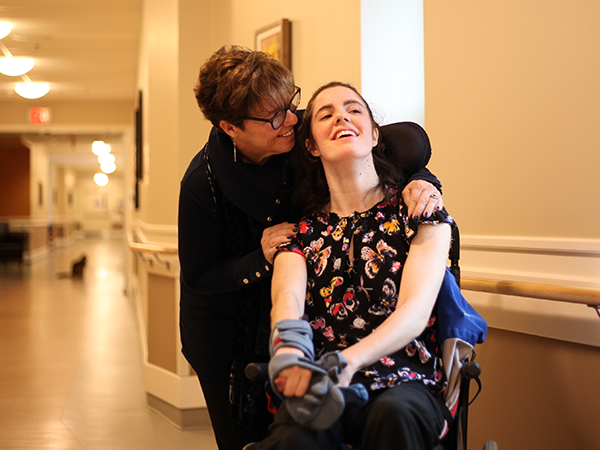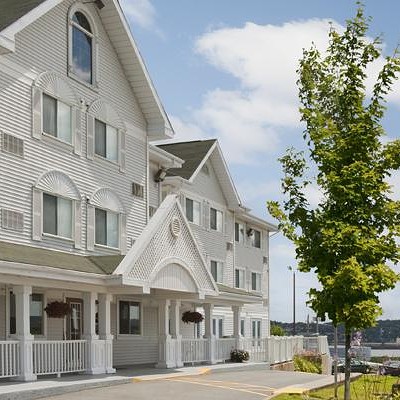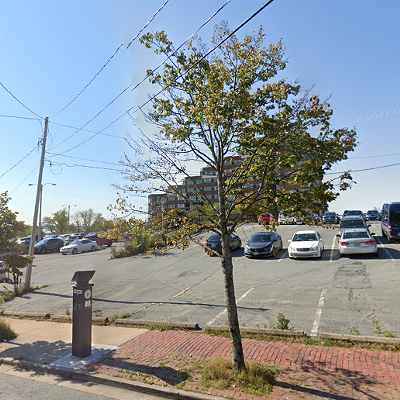Mary Burtt's daughter Laura Osborne was diagnosed with metachromatic leukodystrophy—a rare disease with symptoms of muscle rigidity, inability to walk, seizures and blindness—when she was 16 years old. "We knew it was only going to get worse," says Burt. Laura Osborne's disease progressed until she began using a wheelchair, and by the time she was 20 years old she was fully dependent on physical support. Today she lives in a nursing home with seniors.
"It absolutely broke my heart to leave her there," says Burtt. "The care is great, but the environment is definitely not the ideal environment for a 29-year-old."
As her daughter gradually became dependent on care support, Burtt performed most of the lifting, bathing, dressing and feeding until she herself was physically unable.
"You don't have the opportunity to just be a parent," says Burtt, "you're always thinking about, 'What do I need to do next to make sure that my child is safe and cared for?'"
There were exorbitant costs associated with the disability: An electric wheelchair cost about $8,000; a purpose-made van was up to $80,000 (Burtt found a used one for half-price); 24-hour at-home caregiver support ran up to $15,000 per month.
It wasn't just a struggle to find community supported housing, she says. When they ran out of options the decision to put her daughter in a nursing home was painful.
"When you give birth to a child you promise that baby that you'll be there forever, you'll always take care of them," Burt says.
According to the 2016 census, 240 Nova Scotians between 18 and 60 years old are forced to live in nursing homes despite the government commitment to reform housing for people with disabilities.
Pamela Johnson, manager of the Centre for Behavioural Studies at St. Lawrence College in Ontario, says this is just one sign of a coming crisis. "We will all become familiar with disability in our lives," she says. Nova Scotia has a high rate of disability, and one of largest aging populations in Canada. About 30 percent of Nova Scotians report having one or more disabilities, and Johnson says it will probably get worse as baby boomers age.
Alice Evans, executive director of The Club Inclusion a non-profit that provides accessible social, cultural and recreational programs—says Burtt is far from alone in her struggle to find supports. Parents of children and adults with disabilities are concerned about what will happen to them if they aren't able to perform the required physical care. She echoes Johnson—the population problem is "real and true across the country."
Evans knows several parents who are physically and mentally exhausted by concern for the future. "Parents are so panicked," she says, and more people will have to apply for disability supports in the coming years because they can no longer provide care for their children.
Catalina Devandas Aguilar, the United Nations Special Rapporteur on the rights of persons with disabilities, found in a recent report that although Canada ratified the UN Convention on Rights of Persons with Disabilities, Nova Scotia is out of line with those human rights.
No More Warehousing: Nova Scotia Association for Inclusive Homes and Support responded to the report with a press release saying, "In Nova Scotia it is not a right for the adult disabled to live independently in the community, but a question of social assistance. That situation is wrong...
"While many non-governmental agencies have been established to help those with disabilities, the agencies are underfunded and have huge demands placed on them."
A recent decision by the Nova Scotia Human Rights Board of Inquiry also found three people with mental disabilities were unnecessarily warehoused in institutions because the province failed to provide supported living in communities. In his written decision, board chair Walter Thompson blamed the province for "indifference that really, after time, becomes contempt."
In early April, community services minister Kelly Regan told a press conference that the government was working hard to provide better supports, and announced eight new small options homes currently underway.
But the Community Homes Actions group estimated that 75 new group homes have to be built to meet the goals outlined by a 10-year plan the government adopted in 2013.
Maria Medioli, executive director of disability support, says she still believes the department of community services can meet the target by 2023.
"We're looking at new and creative approaches to meeting the needs of persons with disabilities," she says. "We do still have five years. We really need to reassess as we go and see what all the other options are, and how we can be creative in making the most of the resources we have."
A range of new and current government and non-profit programs provides support at home or in the community, Medioli says. "We don't need to build buildings for those programs. We provide funding and participants choose where they want to live."
Medoli says parents and caregivers should contact staff at the department about support for their concerns. "They will bend over backwards to support families as best they can."

















